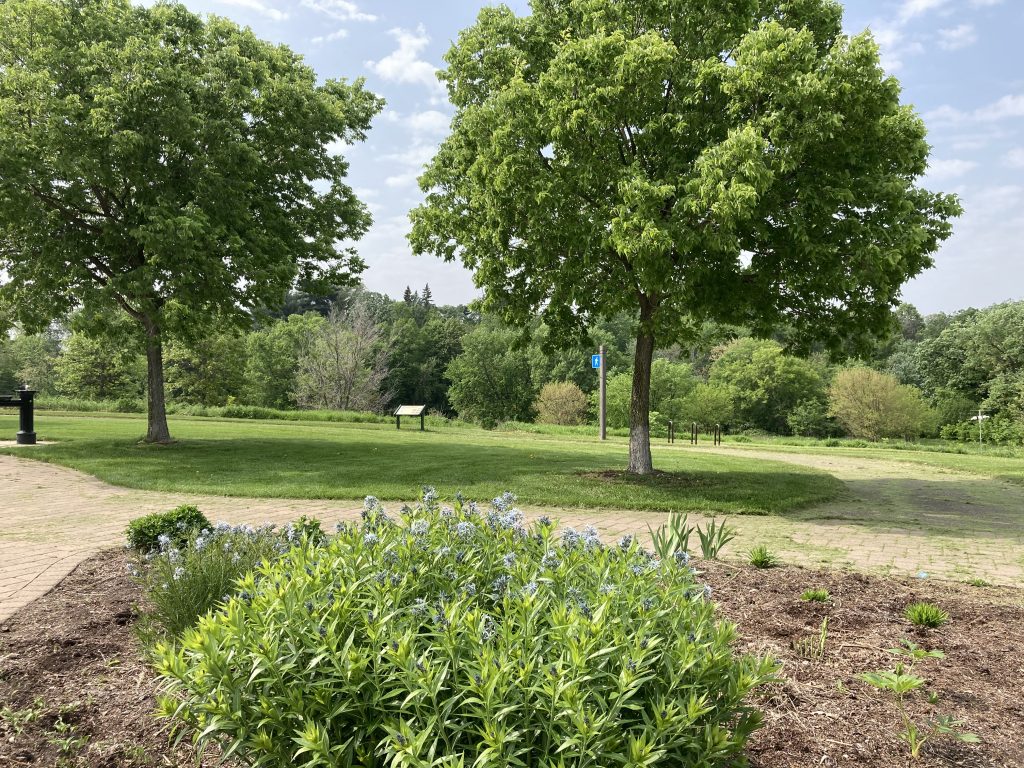bike: 8.5 miles
lake nokomis and back
degrees: 71/75
Gloomy this morning, not gray but white. White skies are the worst. Gray, blue, even green skies are interesting, but white skies are flat and empty and no fun. They’re strange, but in a way that feels oppressive instead of mysterious. One good thing about this overly white light: unlike gray skies, the white doesn’t make it a lot harder to see and make sense of things.
A good bike ride. Didn’t need to pass anyone. No asshole bikers yelled at me. I’ve memorized all the cracks and curves on the path, so I knew where I was going.
The bike ride to Nokomis is only 20 minutes, but it feels longer because you bike through so many different areas — the tight, winding river road, the edge of the crowded and hectic minnehaha park, beside minnehaha parkway then near minnehaha creek, past lake hiawatha and up a big hill, over minnehaha parkway, around a stretch of lake nokomis. As I biked, I tried to remember how grateful I am to still be able to bike — to have this independence — and tried to forget all the places I had to bike through before I reached the beach.
swim: 2 loops (9 little loops)
lake nokomis main beach
71 degrees
Because it’s the last week of open swim and because of sore IT bands, I’m doing more swimming and less running this week. Today’s swim was wonderful. Even though it was windy, the water wasn’t too choppy. No other swimmers or ducks or geese, one seagull, 2 or 3 kids, a boat. Every so often the arm that was that pulling through the water would touch a vine reaching up from the bottom of the lake. I had a brief flash of imagining the vine was evil and wanted to wrap itself around my wrist to drag me under. I didn’t feel freaked out by this thought, just curious.
10 Things
- watching my air bubbles underwater — We calmly trailed over them/and under them, shedding/air bubbles, little white/ balloons
- pinkish orangish buoys, faded from years of use, bobbing in the water — lining up my path to swim-while-barely-seeing through the small gap between them
- looking at the white buoy under water — its lower end covered in greenish brownish muck, the rope tethering it to the bottom of the lake barely there in the cloudy water
- one seagull standing in the sand at the edge of the water
- hearing only a steady slosh as I swam, then stopping to hear the almost of the world above the water
- that quiet being occasionally disrupted by a kid’s voice
- buzzzz — someone’s constructing/reparing? something at painted turtle, I think. Are they building the structure they need to be able to serve beer?!
- the water is shallow almost all the way to the edge of the swimming area
- my yellow backpack, sitting alone, propped against the lifeguard stand
- opaque water out by the white buoys, clear water near the shore
Came across this poem by Robert Frost this morning. I’d like to put it beside May Swenson’s bird deep in the woods in “October” and Emily Dickinson’s purple woods in “A lane of yellow led the eye” and darkness in “A murmur in the trees to note”:
Come In/ Robert Frost
As I came to the edge of the woods,
Thrush music — hark!
Now if it was dusk outside,
Inside it was dark.
Too dark in the woods for a bird
By sleight of wing
To better its perch for the night,
Though it still could sing.
The last of the light of the sun
That had died in the west
Still lived for one song more
In a thrush’s breast.
Far in the pillared dark
Thrush music went —
Almost like a call to come in
To the dark and lament.
But no, I was out for stars;
I would not come in.
I meant not even if asked;
And I hadn’t been.
a few more things I forgot (added hours later)
First, I forgot to mention how I recited 2 poems in my head as I swam loops 5-7. During lap 5, I recited “I measure every grief I meet.” It was a little awkward trying to match the rhythms of Dickinson’s words with my breathing every 5 strokes. In loops 6 and 7, I recited, “The Social Life of Water.” I get hung up a little on the line, Thunder throws itself on estuary. At first I forgot it altogether, jumping straight to Waterspout laughs at joke of frog pond. Then I couldn’t remember what thunder did to the estuary. Finally I got it sorted out and made it to the end — not able even to guess from what you are excluded — by the end of loop 7.
Second, on Sunday I decided I was too tired and sore to swim. Instead, Scott and I took Delia on a walk. We let her off her leash in the field at Howe School and as she ran I noticed wings all around. Monarchs? No, Scott said, dragonflies. A dozen dragonflies! I’ve never seen so many at once. Whenever I see a dragonfly, I think of my mom, who loved them. What a gift to be reminded of her so much! And how cool to see so many wings zooming about!

